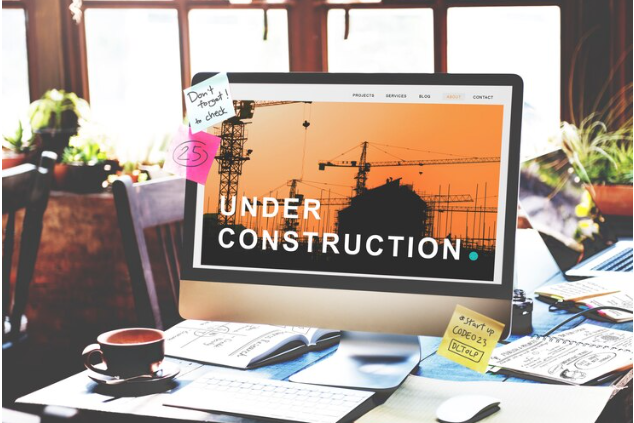Blueprints of Success: Crafting Construction Company Web Designs in the US
In the fast-paced world of construction, having a strong online presence is crucial for success. With the advent of the digital age, consumers expect easy access to information, streamlined communication, and visually engaging experiences. For construction companies in the US, this means having a well-designed website by pixel n code that not only showcases their projects and services but also reflects their brand identity and values. In this article, we’ll explore the key elements of effective construction company web designs in the US, and how they contribute to the success of these businesses.
Understanding the Construction Industry
Before delving into the intricacies of web design for construction companies, it’s essential to understand the unique challenges and opportunities faced by this industry. Construction is a highly competitive field, with companies vying for projects and contracts in a crowded marketplace. In such a competitive landscape, a well-designed website can be a valuable asset, helping construction companies stand out from the crowd and attract potential clients.
Creating a Strong First Impression
One of the most important aspects of construction company web design is creating a strong first impression. As the saying goes, “you never get a second chance to make a first impression,” and this is especially true in the digital realm. When potential clients visit a construction company’s website for the first time, they should be greeted with a visually appealing and professionally designed site that immediately conveys the company’s expertise, professionalism, and reliability.
Showcasing Projects and Portfolio
One of the primary purposes of a construction company website is to showcase past projects and portfolio. Potential clients want to see examples of the company’s work and get a sense of the quality and scope of its projects. A well-designed portfolio section should feature high-resolution images and detailed descriptions of completed projects, highlighting the company’s expertise, craftsmanship, and attention to detail. Additionally, including client testimonials and reviews can help build trust and credibility with potential clients.
Providing Clear and Concise Information
In addition to showcasing projects, a construction company website should provide clear and concise information about the company’s services, expertise, and capabilities. This includes details about the types of projects the company specializes in, its areas of expertise (such as residential, commercial, industrial, etc.), and any additional services offered (such as design-build, project management, etc.). Contact information should be prominently displayed on every page, making it easy for potential clients to get in touch.
Optimizing for Mobile Responsiveness
With the increasing use of smartphones and tablets, it’s essential for construction company websites to be mobile-responsive. A mobile-responsive website adjusts its layout and design to provide an optimal viewing experience across a wide range of devices and screen sizes. This ensures that potential clients can easily access the website and navigate its content, regardless of the device they’re using. Additionally, Google now prioritizes mobile-friendly websites in its search results, so having a mobile-responsive site can also improve search engine rankings.
Integrating Contact Forms and Calls to Action
A key goal of any construction company website is to generate leads and inquiries from potential clients. To facilitate this, the website should include clear calls to action (CTAs) and contact forms on every page. CTAs prompt visitors to take specific actions, such as requesting a quote, scheduling a consultation, or signing up for a newsletter. Contact forms allow visitors to submit their information directly to the company, making it easy for them to get in touch and initiate a conversation.
Ensuring Speed and Performance
In today’s fast-paced digital world, speed and performance are critical factors for website success. A slow-loading website can frustrate visitors and cause them to abandon the site before ever seeing its content. To ensure optimal speed and performance, construction company websites should be optimized for fast loading times, with clean code, optimized images, and minimal use of external scripts and plugins. Additionally, hosting the website on a reliable and high-performance server can further improve speed and performance.
Staying Up to Date with Trends and Technology
Finally, construction company website design should stay up to date with the latest trends and technology in web design. This includes adopting modern design principles, such as clean layouts, bold typography, and immersive visuals. It also means incorporating emerging technologies, such as virtual reality (VR) tours, augmented reality (AR) experiences, and interactive 3D models, to provide unique and engaging experiences for visitors. By staying ahead of the curve, construction companies can ensure that their websites remain relevant and effective in an ever-changing digital landscape.
Conclusion
In conclusion, a well-designed website is a crucial tool for success in the construction industry. By creating a strong first impression, showcasing projects and portfolio, providing clear and concise information, optimizing for mobile responsiveness, integrating contact forms and calls to action, ensuring speed and performance, and staying up to date with trends and technology, construction companies can create effective websites that attract potential clients, generate leads, and ultimately drive business growth. With the right web design strategy, construction companies in the US can position themselves for success in a competitive market.





Leave a Reply
Want to join the discussion?Feel free to contribute!